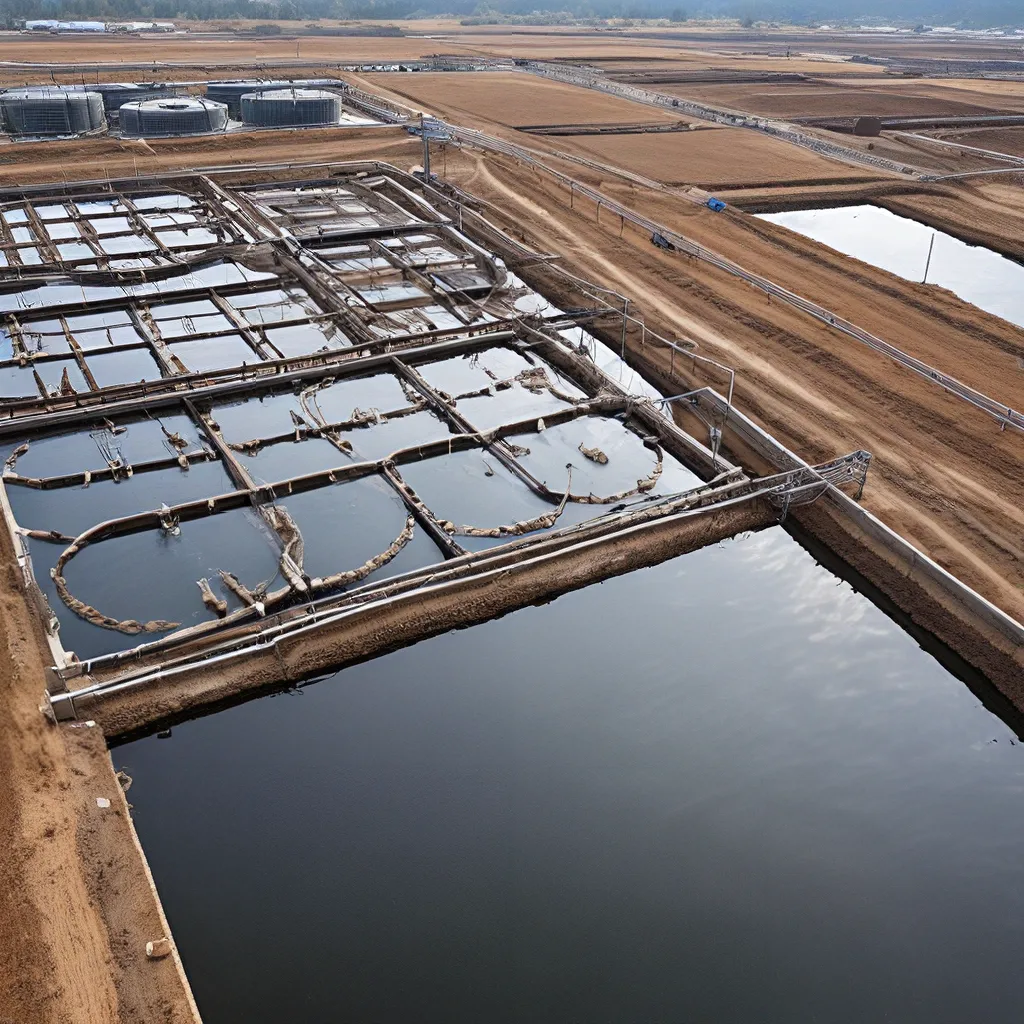
As a wastewater treatment professional, I’ve always been fascinated by the intricate connections between the world of water, energy, and food. It’s like a dance where each element gracefully intertwines, creating a symphony of sustainability. But let me tell you, unraveling this complex nexus is no easy feat. It’s a challenge that requires us to think outside the traditional wastewater treatment box and embrace a more holistic approach.
Uncovering the Treasure Trove of the Water-Energy-Food Nexus
You know, the thing about this water-energy-food (WEF) nexus is that it’s not just about managing these three resources separately. It’s about recognizing their interdependence and finding ways to optimize their collective performance. Think about it – water is essential for producing energy and growing food, while energy is needed to power water treatment and distribution systems. And let’s not forget, the food we produce also has a significant impact on our water and energy footprint. It’s a delicate balance, and if we don’t get it right, we could be facing some serious challenges down the road.
But here’s the good news – researchers have been working hard to unlock the full potential of the WEF nexus, and the results are pretty exciting. A recent study from PNAS Nexus showed that by taking an integrated optimization approach to the WEF nexus, cities like Beijing were able to reduce their resource consumption by 21% and greenhouse gas emissions by 29%. That’s a pretty impressive feat, if you ask me.
Harnessing the Power of Biochar: A Sustainable Solution for the WEF Nexus
Now, one of the key elements in this optimization puzzle is the role of biochar. This magical black stuff is the solid product of biomass pyrolysis, and it’s been gaining some serious attention in the world of sustainability. Why, you ask? Well, it turns out biochar has some pretty nifty properties that make it a game-changer for the WEF nexus.
For starters, biochar can be used as a soil amendment, improving soil structure, nutrient retention, and water-holding capacity. This means it can help boost crop yields and reduce the need for chemical fertilizers – a win-win for the food and water sectors. But that’s not all – biochar can also be used as an adsorbent in wastewater treatment, removing all sorts of nasty contaminants like heavy metals and dyes. And get this, the production of biochar can even generate renewable energy in the form of heat and power. Talk about a triple-threat!
Optimizing the Biochar Equation: Unlocking the Sweet Spot
Now, the real challenge lies in finding the optimal way to produce and utilize this wonder material. After all, we don’t want to create more problems than we solve, right? That’s where the researchers at PNAS Nexus come in. They’ve developed a sophisticated optimization framework that considers the energy, water, and cost implications of different biochar production and application scenarios.
The key is to strike the right balance between the various end-use options for biochar – wastewater treatment, soil amendment, and energy production. You see, each of these pathways has its own unique set of trade-offs and synergies. For example, using biochar for wastewater treatment might be great for water quality, but it could come at the cost of higher energy consumption. On the other hand, using biochar as a soil amendment might have lower energy requirements, but it could impact water usage.
By systematically exploring these interconnections, the researchers were able to identify the optimal biochar blends and application strategies that deliver the greatest benefits across the WEF nexus. And get this – they even factored in the differences in biomass feedstocks, like camel manure, date pits, sewage sludge, and coffee waste. Talk about a comprehensive approach!
Embracing the Circular Economy: Biochar’s Role in Sustainable Resource Management
But you know, the beauty of this WEF nexus optimization goes beyond just the technical aspects. It’s also about embracing the principles of the circular economy. Instead of treating our waste as, well, waste, we can actually transform it into valuable resources. Take that sewage sludge, for example – it might seem like a smelly problem, but when you convert it into biochar, it becomes a solution for improving soil quality and cleaning up wastewater.
And that’s just the tip of the iceberg. By implementing these integrated optimization strategies, cities and communities can unlock a whole new level of sustainability. We’re talking about reduced resource consumption, lower greenhouse gas emissions, and even potential cost savings. It’s a win-win-win situation, if you ask me.
The Future of Wastewater Treatment: Embracing the WEF Nexus Approach
So, where do we go from here? Well, I believe the future of wastewater treatment lies in fully embracing the water-energy-food nexus approach. It’s not just about managing water resources – it’s about optimizing the entire ecosystem to create a more sustainable and resilient future.
And you know what’s really exciting? This isn’t just a theoretical concept. Cities around the world are already putting these strategies into practice, exploring innovative ways to leverage the synergies between water, energy, and food. From urban farming initiatives that reuse wastewater for irrigation to renewable energy-powered treatment plants, the possibilities are truly endless.
Of course, there’s still a lot of work to be done. We need to continue pushing the boundaries of research, exploring new technologies and approaches that can further enhance the efficiency and sustainability of the WEF nexus. But I’m confident that with the right mindset and a willingness to think outside the box, we can unlock the full potential of this powerful interconnection.
So, what are you waiting for? Let’s dive in, roll up our sleeves, and revolutionize the world of wastewater treatment. Who knows, we might just end up finding the secret to a more sustainable and prosperous future for all.